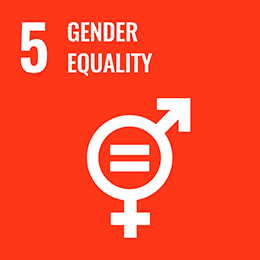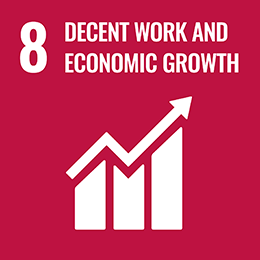The XX Factor

Share this article
Gender Equality
“There is no tool for development more effective than the empowerment of women and girls” - Kofi Annan, UN Secretary General
Earlier this month, the UK’s current head of state celebrated 67 years on the throne. During that time, Communism has risen, fallen and then risen again (at least in Jeremy Corbyn’s mind and in those of many US democratic presidential candidates).
The Beatles have come and almost gone. Britain has been bailed out by the International Monetary Fund; turned briefly into Cool Britannia; and all the while producing a GDP that makes 66 million people and a small island the world’s 5th most economically powerful nation.
Women CEOs in the Fortune 1000 drive three times the returns as S&P 500 firms run predominantly by men. But forget companies, what about countries? The Queen is awesome. She has outlasted and outperformed every other head of state. Even in Australia, we somehow keep voting to stay in the Commonwealth. Why? Because of the Queen.
Every year is going to be Year of the Woman. Everyone talks about commitment to gender diversity. So, why is workplace inequality still even a subject?
In short: discrimination is ingrained in the collective consciousness. It starts from even before that very first job. Last year saw some progress: Iceland made paying women less than men illegal; the New York Stock Exchange appointed its first female president¹; and Jacinda Ardern, Prime Minister of New Zealand became the first world leader to take maternity leave.
Empowering all women is not only a basic human right, but also good economics. If as many women worked as men, GDP would increase by 5% in the US, 12% in the United Arab Emirates and 27% in India.
The UK’s new gender pay gap regulations could add £150 billion by 2025, while the success of Japan’s queen of tidying, Marie Kondo, shows the latent value of the female labour force could have been worth $1.25 trillion, or 25.7% of GDP, in 2016.
Globally, advancing women’s equality could add $12 trillion, or 11%, to GDP by 2025. It’s a no brainer, yet according to the 2018 Global Gender Gap Report gender equality is 108 years away.
Females make up approximately half of the 7.7 billion people on the planet, making the empowerment of women and girls—Sustainable Development Goal 5: Gender Equality—a key goal for the United Nations’ 2030 sustainable development agenda.
Today, for every dollar a man earns a woman gets 77 cents and less than 20% of the world’s landholders are women. According to the Global Gender Gap Index gender parity is measured across political empowerment; educational attainment; and health and survival, but only ‘economic opportunity’ narrowed its gender gap in 2018.
With exemplary parental leave support in Scandinavia it is hardly surprising that Norway, Sweden and Finland top the index, but initiatives such as three month paid maternity has also seen Rwanda make it into the top 10.
Nowhere is the gender division more obvious than in the Middle East and North Africa, where the male guardianship structure means it will take about 153 years to close the gap, according to the gender gap report.
The growing number of women in leadership roles is perhaps one reason there is a narrowing gap in ‘economic opportunity’. But let’s not celebrate just yet. Female leadership across 12 industries is still less than 50%. Finance, energy and manufacturing have less than 20% of women as leaders and investment banks are paying women as much as 35.2% less than male colleagues².
Ironic really, because when we first looked at gender almost four years ago, we argued that the way women look at risk made them ideal leaders in the ‘beleaguered’ banking world. Today, only 14% of women hold senior roles financial services in the UK and there are still 10 all-male boards in the FTSE 350.
Despite not liking the gender association of her new role, when Adena Friedman became CEO of Nasdaq and the first female head of a global stock exchange, she realised that it was the key to supporting other women to make it into the C-suite.
From an investment perspective, Gender Lens Investing is now in popular with impact investors. Using financial inclusion to empower women to fight their way out of poverty through micro-loans and micro insurance can be game changing. But there is a catch; microfinance is only powerful with ‘educational attainment’ in the first place.
With rapid developments in artificial intelligence, addressing the gender gap in science, technology, engineering and mathematics is imperative if we don’t want to end up with gender biased robots. As Donna Strickland, the third woman to win the Nobel Prize in physics, says: “I don’t see myself as a woman in science. I see myself as a scientist”.
Gender equality is both a bottom up and top down process that requires ‘political empowerment’. Despite only having 23.7% representation in national parliaments, 2018 saw women starting to make strides in politics, with Mexico rising to 4th place for highest women’s representation after Rwanda, Cuba and Bolivia.
Thanks to Emmeline Pankhurst, 100 years ago British women won the right to vote. Sixty years later Margaret Thatcher became Britain’s first female Prime Minister and today, Theresa May is the second most powerful woman in the world, after Angela Merkel.
Along with the IMF’s Christine Lagarde and General Motors’ Marry Barra, who are also in the top five of Forbes World’s 100 Most Powerful Women list, at least there are role models.
Will 2020 be the year that the US sees its first female president? Or at the very least, its first female vice president?
Speaking in 2006 to mark the 60th anniversary of the Commission on the Status of Women, the late Kofi Annan highlighted that both men and women were affected by the challenges facing humanity in the 21st century.
He was right. It’s no longer the battle of the sexes but more finding the ‘Balance of the Sexes’. Or as this year’s theme for International Women's Day puts it #BalanceforBetter.
Photo: © Niki Natarajan 2017
Artist: Meg Zany
¹The NYSE names a woman as president. Thirty years ago, its lunch club didn’t have a ladies’ room (22.5.2018), The Washington Post
²City investment banks reveal gender pay gap data (27.3.2018), Financial Times
Article for information only. All content is created and published by CdR Capital SA. The views and opinions expressed in this article are those of the author(s). Information on this website is only directed at professional, institutional or qualified investors and is not suitable for retail investors. None of the material contained on this website is intended to constitute an offer to sell, or an invitation or solicitation of an offer to buy any product or service. Nothing in this website, or article, should be construed as investment, tax, legal or other advice.
Related articles
Government
Climate crises, plagues, an unwillingness to trade with foreigners and the corruption of democracy: a snapshot of the 21st century or a sign history is repeating itself?

Women Behaving Better
Explaining the differences between the sexes, especially if you are a man, is like playing with a loaded gun. Advances in neuroscience means attributing these differences to our brains being wired differently is both socially acceptable and good business.

Men Behaving Badly
The financial world does not have the greatest of reputations. Reckless behaviour frequently plastered all over the tabloid press, while the broad sheets analyse complex derivative trades gone sour. All the usual soap boxes blame 'men behaving badly'.




